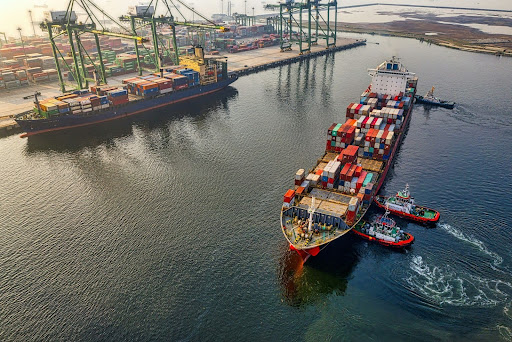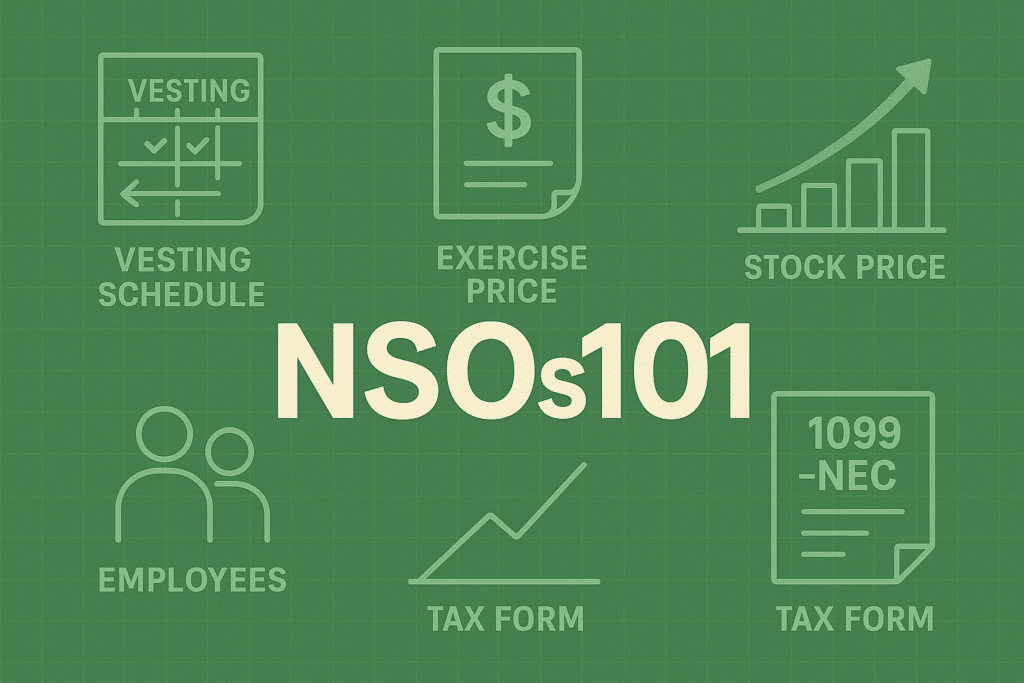Tariffs have played a significant role in international trade and economic policy for centuries, and the United States is no exception. From the earliest days of the country, tariffs have been used to protect budding industries, generate revenue, and occasionally exert geopolitical leverage. In modern times, tariffs remain a powerful—though frequently controversial—tool of economic policy.
This article will explore what tariffs are, discuss their potential advantages and disadvantages, delve into the effects of the Trump administration’s first round of tariffs, and conclude with insights on what might happen if tariffs continue as a favored policy tool.
What Are Tariffs?
Tariffs are taxes or duties imposed by a government on imported goods and services. While the concept may seem straightforward, the types of tariffs—and their impacts—can vary significantly depending on how they are structured and applied.
Here are some fundamental tariff types to consider:
Ad Valorem Tariffs: These are calculated as a percentage of the value of the imported good. For example, a 10% ad valorem tariff on a piece of machinery priced at $1,000 would add $100 in import taxes. The percentage-based approach means that if the good’s price rises or falls, so does the amount of tariff owed. This can make ad valorem tariffs relatively flexible, but it also introduces some uncertainty for both importers and exporters as market prices fluctuate.
Specific Tariffs: A specific tariff is a fixed fee levied on a particular quantity or unit of the imported product—such as $1 per kilogram of coffee beans. This model offers predictable revenue and doesn’t change with price swings in the goods themselves. However, if the market price of the good rises significantly, the specific tariff becomes a smaller share of the total cost, potentially diluting its protective effect on domestic producers.
Compound Tariffs: Compound tariffs combine both an ad valorem rate and a specific charge. For instance, a country might impose a 5% tax on the value of imported textiles plus an additional $0.25 per pound. This approach can offer the “best of both worlds” by creating a floor of revenue generation while still adjusting for price fluctuations in the imported goods.
Mixed Tariffs: Mixed tariffs use either an ad valorem rate or a specific rate, whichever results in a higher (or lower) payment, depending on the policy design. For example, a mixed tariff might be set at 5% of the total value of an imported product or $0.30 per kilogram—whichever amount is greater. This structure helps ensure the government secures a minimum level of revenue while also providing flexibility to protect domestic producers in times of price volatility.
What Are The Major “Pro-Tariff” Arguments?
Protection of Domestic Industries: Tariffs can shield industries that are viewed as vital to national security or emerging in critical technology sectors. By levying taxes on foreign competitors, domestic producers may gain time and resources to strengthen their capabilities.
Job Creation (in Certain Sectors): Higher tariffs can, in theory, preserve or create jobs in industries that compete directly with imports. If foreign goods become more expensive, domestic producers may experience increased demand, potentially hiring more workers.
Bargaining Chip in Trade Negotiations: Tariffs can be used as leverage to secure better trade deals. Countries may agree to reduce their tariffs or remove other trade barriers if faced with increased import taxes in a key export market.
Revenue Generation: In nations with weaker tax systems, tariffs can constitute an important source of government revenue, though this is less crucial in advanced economies like the United States (where tariffs account for a smaller share of federal income).
What Are The Major “Anti-Tariff” Arguments?
Higher Consumer Prices: One of the most immediate consequences is that the cost of imported goods rises. Companies that rely on imported components may pass these costs on to consumers, leading to higher prices in the marketplace.
Retaliation and Trade Wars: Countries targeted by tariffs often respond with their own tariffs on exports from the imposing country, which can escalate into a trade war that harms businesses and consumers on both sides.
Reduced Competitiveness and Innovation: When domestic industries are shielded for too long, they may have less incentive to innovate or cut costs. This can hurt global competitiveness in the long run.
Economic Uncertainty: Sudden tariff impositions can disrupt global supply chains, creating volatility in markets. Businesses may delay investment decisions if they expect further tariffs or retaliation.
Effects of Trump’s First Round of Tariffs
This is not the first time we’ve seen tariffs used under a Trump administration. When President Donald Trump took office back in 2017, one of his early economic policy moves was to impose tariffs on specific imports, especially steel and aluminum, citing national security and unfair trade practices.1 2
Below are some major impacts observed from these initial rounds:
Slowing of GDP Growth and Investment: U.S. GDP growth decelerated amid the trade war. After reaching ~3% in 2018, growth downshifted toward ~2% in 2019 as tariffs and uncertainty weighed on the economy.3 Global growth also cooled; the IMF warned in late 2019 that the U.S.-China tariffs were contributing to the slowest pace of world growth since the 2008–09 crisis.4 Business investment notably weakened during this period of heightened trade tensions. In Q2 2019, U.S. business fixed investment fell at a 1.0% annualized rate – the steepest drop since 2015 – a downturn widely attributed to the ongoing tariff dispute with China.5
Retaliatory Tariffs: In response to U.S. tariffs, China imposed duties on a range of U.S. agricultural products.6 This included a 25% tariff on soybeans that effectively halted U.S. soybean exports to China overnight.7 After the U.S. levied steel and aluminum tariffs on national security grounds, Canada and Mexico quickly retaliated in mid-2018. Canada imposed tit-for-tat tariffs on U.S. steel/aluminum and targeted additional U.S. goods, while Mexico placed a range of tariffs on a variety of products.8 9
Supply Chain Disruptions: Global supply chains underwent significant disruption and reconfiguration due to the tariffs. Companies worked to mitigate new import costs, leading to shifts in sourcing, production relocations, and logistical challenges. Faced with tariffs on Chinese imports, many U.S. firms sought alternative suppliers or moved production. A late-2019 survey of U.S. electronics manufacturers found 51% were sourcing inputs from countries other than China to escape the tariffs, and nearly 1 in 5 firms were relocating manufacturing out of China entirely.10
Mixed and Costly Job Creation: Mixed Jobs Impact: Tariffs produced short-term gains in protected industries but at a broader cost. For example, U.S. employment in steel and aluminum production rose ~5–6% from 2017 to 2019 after new metal tariffs. However, those gains were not sustained, and higher steel/aluminum prices impacted downstream manufacturers. A Federal Reserve study in 2019 estimated that the 2018 metal tariffs raised input costs and resulted in fewer manufacturing jobs than would have existed without the tariffs.11
Price Increases for Consumers and Passed-On Costs: The trade war saw prices on some American goods rise. For example, when tariffs on washing machines were imposed in 2018, prices rose by roughly 12%, leading to an estimated $1.5 billion increase in costs for U.S. consumers.12 It was also estimated that 108–225% of the tariff costs were passed on to U.S. consumers.13
My Personal Thoughts on Tariffs Continuing
I’ll be upfront: I’m not a huge fan of tariffs. To me, they often feel like a high-risk gamble with a convoluted chance of delivering success over the long term. If these policies are a game of chess, of which the game lasts a long time, these shorter-term moves could still sabotage the game. I don’t see the rest of the world backing down from this economic war. I believe that tariffs are a bet on the U.S. versus. Everybody. Despite the chaos, Trump’s first administration did deliver stronger U.S. stock performance than the rest of the globe, but at what longer-term cost'
Here are several points that shape my perspective:
Past Results: From what we’ve seen in previous rounds of tariffs—most notably during the Trump administration—many of the added costs ended up being passed along to consumers rather than driving a lasting industrial renaissance. While there may have been pockets of job growth in certain sectors, overall employment gains were not as robust as initially hoped.
Retaliation and Hostile Trade Relations: When one country imposes tariffs, retaliation from trading partners is almost inevitable. This back-and-forth can sour diplomatic relationships and spark ongoing trade disputes, making it harder to strike beneficial deals in the future. Over time, hostility in trade relations can hinder global cooperation and create long-lasting ripples in economies and with politics. And what if real wars develop' What then'
Market Volatility and Lag Time: Uncertainty about tariff policies can rattle financial markets and stoke investor hesitation, leading to heightened volatility and, in some cases, significant downslides. This might create buying opportunities for those who can invest with a long-term view, but it can be very unsettling for people who are near—or already in—retirement. Even if tariffs do bring potential benefits, the positive effects can take a long time to materialize. And given today’s high cost of living—everything from eggs to housing—it’s a tough reality for many Americans to bear.
Please Note: These points reflect my view of what could happen if tariffs continue to be a favored policy tool. Nobody, including me, can predict the future with perfect accuracy, and tariff policies have already been applied, delayed, and raised multiple times before this article was published. The landscape is always shifting, so it’s fair to say tariff policy might feel like a roller coaster. Nevertheless, it seems the threat of tariffs—in some form—is here to stay.
Where Do You Go From Here?
Talks of tariffs and potential trade wars have undoubtedly heightened anxiety in today’s market. Concerns about rising consumer prices, retaliatory measures, and escalating tensions can put investors and everyday consumers on edge.
If you’re feeling uncertain, remember there are ways to potentially capitalize on volatility—or shield yourself from it. Staying informed and evaluating your long-term goals can help you make more confident decisions, even amid the turbulence.
Our team is here to assist if you have questions about how to navigate these shifts. Whether you’re looking to shore up your portfolio or explore strategic opportunities, we welcome the chance to discuss how you might best prepare for whatever the market brings next. Use the button below to schedule a complimentary consultation!
Resources:
- https://crsreports.congress.gov/product/pdf/IN/IN12519#:~:text=In%202018%2C%20President%20Trump%20proclaimed,applicable%20to%20any%20importer
- https://ustr.gov/about-us/policy-offices/press-office/press-releases/2018/june/ustr-issues-tariffs-chinese-products#:~:text=Washington%2C%20DC%20%E2%80%93%20The%20Office,American%20technology%20and%20intellectual%20property
- https://siliconeer.com/current/us-economic-growth-slowed-in-2019-hit-by-trade-wars/#:~:text=The%20%2421%20trillion%20economy%20grew,0%20percent%20or%20higher
- https://www.reuters.com/article/business/us-business-investment-downturn-could-pressure-slowing-economy-idUSKBN1WB2CX/#:~:text=a%20moderate%20path,now%20in%20its%2011th%20year
- https://www.reuters.com/article/business/us-business-investment-downturn-could-pressure-slowing-economy-idUSKBN1WB2CX/#:~:text=fears%20of%20a%20recession
- https://www.kansascityfed.org/documents/6891/reshuffling-soybean-markets-v105n1cowley.pdf
- https://soygrowers.com/news-releases/soy-growers-still-bruised-by-2018-trade-war-talk-china-before-house-ag/#:~:text=,to%20the%20country%20overnight
- https://www.business-standard.com/world-news/us-canada-trade-war-trump-tariffs-mexico-china-2018-125030400215_1.html
- https://globaltaxnews.ey.com/news/2018-5763-mexico-takes-retaliatory-measures-against-us-imposition-of-steel-and-aluminum-tariffs#:~:text=The%20Mexican%20Government%20issued%20the,from%207%25%20to%2025%25
- https://www.ipc.org/sites/default/files/documents/IPC-Tariff-Report-Oct-2019.pdf#:~:text=responding%20companies%20report%20they%20are,business%20interests%20outside%20of%20China
- https://www.reuters.com/graphics/TRUMP-TARIFFS/STEEL/gdpznwgdzpw/#:~:text=The%20increase%20in%20domestic%20steel,based%20goods
- https://www.nbcnews.com/business/consumer/trump-s-washing-machine-tariffs-are-costing-americans-almost-100-n999461
- https://www.aeaweb.org/research/washing-machines-2018-tariffs-effect#:~:text=Foreign%20manufacturers%20moved%20production%20again%2C,to%20consumers%20via%20higher%20prices












